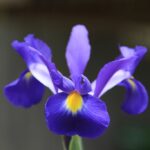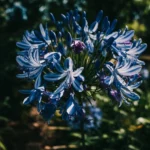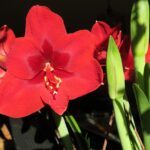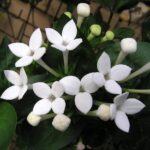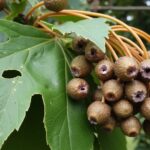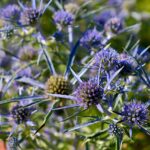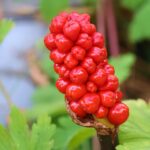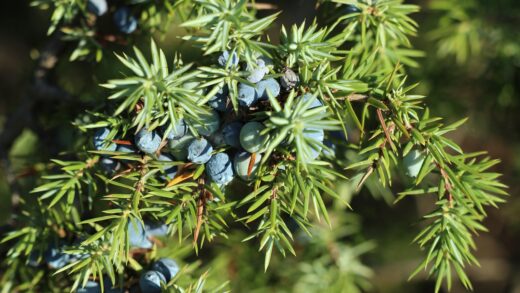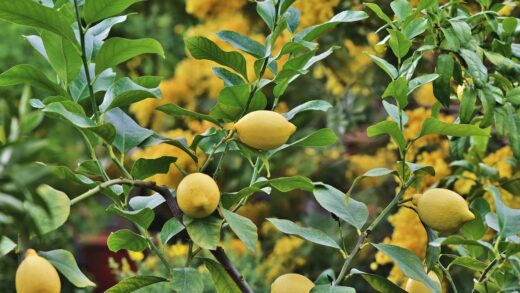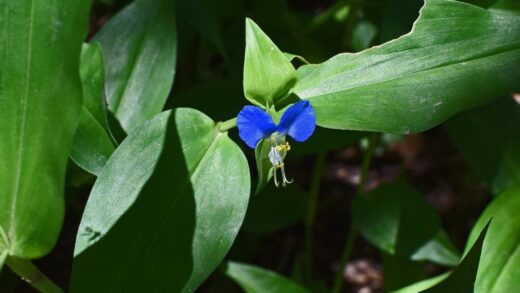Providing Dutch irises with the appropriate nutrients through a well-timed fertilization program is essential for promoting vigorous growth, strong bulb development, and a profusion of vibrant, high-quality flowers. Like all plants, irises require a balance of essential macro and micronutrients to carry out their life processes. Understanding what to feed them, when to feed them, and which fertilizers to use can transform an average floral display into a truly spectacular one. A thoughtful approach to nutrition ensures the bulbs have the energy reserves needed not only for the current season’s blooms but also for their long-term health and proliferation.
The nutritional needs of Dutch irises are centered around three primary macronutrients: nitrogen (N), phosphorus (P), and potassium (K). Each plays a distinct and vital role in the plant’s health. Nitrogen is crucial for the development of lush, green foliage, but it must be used in moderation for irises. Phosphorus is arguably the most critical nutrient for bulbous plants, as it directly promotes strong root development and is essential for the energy transfer processes that lead to flower production. Potassium contributes to the overall vigor and resilience of the plant, helping with water regulation and improving its resistance to diseases.
Because of these specific needs, the ideal fertilizer for Dutch irises is one that is low in nitrogen but high in phosphorus and potassium. This is often referred to as a “bulb food” or “bulb booster.” The analysis, or N-P-K ratio, printed on a fertilizer package indicates the percentage of these three nutrients. A formulation such as 5-10-10 or an even lower nitrogen ratio like 3-5-3 provides the perfect balance, encouraging the plant to invest its energy in producing beautiful flowers and strong bulbs rather than excessive, floppy leaves.
In addition to the primary macronutrients, Dutch irises also benefit from a range of micronutrients, such as calcium, magnesium, and boron, which are typically present in good-quality garden soil and compost. Using organic amendments like bone meal and well-rotted compost can provide a slow-release source of these essential elements. A balanced nutritional strategy that addresses all these needs is the foundation for a healthy and floriferous iris patch, ensuring the plants have everything they require to thrive from one season to the next.
Choosing the right fertilizer
When selecting a fertilizer for your Dutch irises, the choice generally comes down to either synthetic granular formulas or organic options. Granular synthetic fertilizers that are specifically formulated for bulbs are a popular and effective choice. These products are designed with the optimal N-P-K ratio, such as 5-10-10, to provide the necessary nutrients in a readily available form. They offer a controlled and predictable way to feed your plants, ensuring they receive a balanced diet tailored to their needs for robust blooms and healthy bulb formation.
Organic fertilizers are another excellent option and work to improve the soil’s health over the long term. Bone meal is a classic and highly recommended organic amendment for all bulbous plants, including Dutch irises. It is a fantastic natural source of phosphorus and calcium, which are vital for strong root and bulb growth. Another beneficial organic choice is a balanced compost, which not only supplies a slow-release source of a wide range of nutrients but also improves soil structure, aeration, and water retention.
Liquid fertilizers can also be used, though they are generally applied during the active growing season rather than at planting time. A diluted, low-nitrogen liquid feed, such as one derived from seaweed or fish emulsion, can be applied every few weeks in the spring from the time shoots emerge until the flowers begin to open. This can provide a gentle boost to the plants during their period of most rapid growth. However, care must be taken not to over-fertilize, and all liquid feeding should cease once the plants are in bloom.
Regardless of the type of fertilizer you choose, it is crucial to avoid those with a high percentage of nitrogen. While nitrogen is essential for leaf growth, an excess of it will stimulate the production of lush, soft foliage at the direct expense of the flowers. This weak, sappy growth is also much more attractive to pests like aphids and more susceptible to fungal diseases. Therefore, always check the N-P-K ratio on the packaging and select a product that prioritizes phosphorus and potassium over nitrogen for the best results with your Dutch irises.
Application timing and techniques
The timing of fertilizer application is just as important as the choice of fertilizer itself for ensuring the nutrients are available when the Dutch iris needs them most. The primary feeding should occur at the time of planting in the autumn. As you prepare the planting holes, incorporate a slow-release granular bulb food or a generous helping of bone meal into the soil at the bottom of the hole. This places the nutrients, particularly the root-stimulating phosphorus, directly in the zone where new roots will develop over the winter.
After this initial application at planting, a second feeding is beneficial in the early spring. This should be done just as the new green shoots are beginning to push through the soil surface. A light top-dressing of a balanced, low-nitrogen granular fertilizer can be scattered on the ground around the emerging plants. Avoid letting the granules fall directly into the crown of the new shoots, as this can cause chemical burns to the tender new growth.
When applying fertilizer as a top-dressing in the spring, it is important to ensure the nutrients can reach the plant’s root system. After scattering the granular fertilizer evenly on the soil surface, gently scratch it into the top inch of soil using a hand cultivator or your fingers. This minor incorporation helps to start the breakdown process and prevents the fertilizer from being washed away by heavy rain. It is also essential to water the area thoroughly after application, which dissolves the nutrients and allows them to percolate down to the roots where they can be absorbed.
A critical rule to follow is to stop all fertilization once the flowers have finished blooming. As the plant’s foliage begins to yellow and the bulb prepares for its summer dormancy, it is no longer actively taking up nutrients from the soil. Adding fertilizer at this stage is not only wasteful but can be harmful, potentially encouraging late, weak growth or contributing to the risk of bulb rot. The plant will generate its energy for the next season via photosynthesis in its leaves, not through late-season feeding.
Organic vs. synthetic fertilizers
Gardeners often face the choice between using organic and synthetic fertilizers, and both have their own set of advantages for cultivating Dutch irises. Synthetic fertilizers are manufactured chemical products that offer nutrients in a concentrated, water-soluble form. Their primary benefit is that they are fast-acting, providing nutrients that are immediately available for plant uptake. This can be particularly useful for giving plants a quick boost in the spring as they emerge from dormancy and begin their rapid growth phase.
However, the fast-release nature of synthetic fertilizers can also be a drawback, as it increases the risk of over-fertilizing and potentially burning the plant’s roots if not applied correctly. They also do very little to improve the long-term health and structure of the soil itself. Their nutrients can also be leached away by heavy rains more quickly, sometimes requiring more frequent application and potentially contributing to nutrient runoff into the wider environment. Careful measurement and application according to the package directions are essential when using these products.
Organic fertilizers, on the other hand, are derived from natural materials such as bone meal, compost, and well-rotted manures. These materials release their nutrients slowly over a long period as they are broken down by microorganisms in the soil. This slow-release action provides a steady, gentle feed that is less likely to burn plants. More importantly, organic fertilizers also improve the soil’s physical properties by adding organic matter, which enhances soil structure, increases water retention, and fosters a healthy ecosystem of beneficial soil microbes.
For the long-term health of your Dutch irises and your garden as a whole, a strategy that incorporates organic matter is often considered superior. Using compost to enrich the soil and bone meal at planting time builds a sustainable foundation of fertility. While synthetic fertilizers can be a useful tool for a targeted spring feeding, the soil-building benefits of organic materials provide a more holistic approach to plant nutrition, leading to healthier soil and, consequently, healthier and more resilient plants year after year.
Recognizing signs of nutrient deficiency
While a good fertilization plan can prevent most problems, it is still useful for a gardener to be able to recognize the signs of potential nutrient deficiencies in their Dutch irises. One of the most common signs of a general lack of nutrients is stunted growth and a weak or spindly appearance. If the plants are noticeably smaller than expected and the foliage seems sparse, it could indicate that the soil is lacking in overall fertility and would benefit from the application of a balanced fertilizer.
A specific deficiency in nitrogen will often manifest as a uniform yellowing of the leaves, a condition known as chlorosis, which typically starts with the older, lower leaves first. While Dutch irises require low nitrogen, a complete lack of it will hinder the plant’s ability to photosynthesize effectively. However, it is important to differentiate this from the natural yellowing of the foliage that occurs after flowering, which is a normal part of the plant’s lifecycle as it enters dormancy.
A lack of phosphorus, the key nutrient for blooms, can result in poor flowering or a complete failure to produce flowers, even on a plant that appears to have healthy foliage. The leaves might also take on a dull, slightly purplish tint. Since phosphorus is crucial for root development, a deficiency can also lead to a poorly established plant. This is why incorporating a phosphorus-rich source like bone meal at the time of planting is so highly recommended to prevent this issue from the start.
Potassium deficiency can also impact the overall health and vigor of the plant. Its signs are often more subtle but can include yellowing along the margins and tips of the leaves, as well as weak stems that are more prone to bending or breaking. A lack of potassium can also make the plant more susceptible to both diseases and environmental stresses like drought. A soil test is the most accurate way to diagnose specific nutrient deficiencies, but observing your plants closely can provide important clues to their nutritional needs.
📷: Oleg Yunakov via Wikipedia CC BY-SA 4.0



